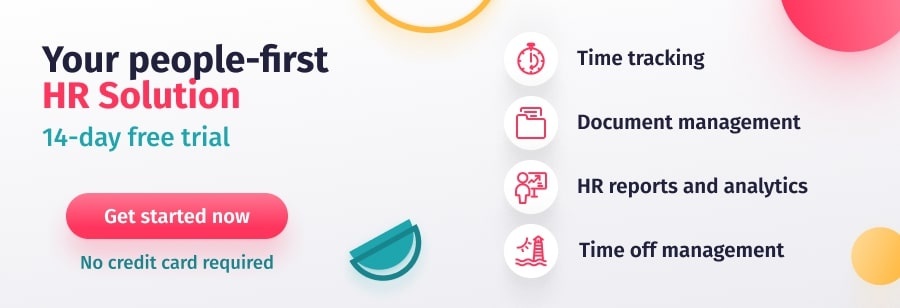We’ve all heard about audits, and most of us have experienced them at some point or another, either on an individual or corporate level. They can be a nerve-wracking experience if you’re not prepared, and there are several things that could go wrong. Let’s try and address some of the questions that may come up for you as you put together your company audit.
- What is a company audit and what is its purpose?
- Are there different types of audits and what are their benefits?
- What external factors can influence the outcome of a business auditor report?
- HR Audit Checklist – Free Template
- Human Resource Management Software ✅
What is a Company Audit?
An audit is an inspection of an organization’s accounts and/or processes. The purpose of an audit is to ensure compliance, determine accuracy and safety, and catch any potential financial problems and errors. An effective company audit process helps companies stay organized and make better business decisions. Best of all, audits can help boost a business’s bottom line.
An audit can be internal or external, and it can apply to an entire company or a specific department. Audits are used to measure risk, assess performance, and detect areas requiring corrective measures. Phases of an audit include planning and preparation, execution, reporting and follow-up.
Types of Company Audits
When you hear the word audit, what comes to mind? Most people think of a financial audit, but this is just one of many different types of audits. There are tax audits, construction audits, and forensic audits, to name a few.
Audits can be conducted on management systems to verify and certify that elements of the system are appropriate and effective and meet specific requirements (such as an ISO 27001 audit). Audits can also be carried out on a particular product or service to evaluate whether it meets performance and safety standards. The third type of audit is a process audit that evaluates an operation or method against predetermined instructions or standards. The aim is to check compliance with defined requirements, examine the resources and process performance, and check the effectiveness of procedures, training and work instructions. The more audits performed, the more a company can measure the efficiency and effectiveness of internal processes and controls.
The most common types of audit are as follows:
- A financial audit is an objective, independent inspection of accounts, statutory records, and documents in an organization to verify if records and statements are compliant and credible and if investor and client risk/confidence should be increased or decreased.
- A compliance audit checks company internal policies and procedures to determine compliance with specific laws and regulations (such as a fire safety compliance audit or banking sector requirements)
- An information systems audit is an examination of management controls within a technological infrastructure. The audit obtains evidence to determine if systems are safeguarding assets and maintaining data integrity.
- Operational audits analyze company goals, processes, procedures and operational results to detect and develop business departments and areas requiring improvement.
- An HR audit is a full review of all policies, procedures, documents and systems maintained by the human resources department. The aim is for a company auditor to gather recommendations for continuous improvement and increased performance. An internal HR audit should be included in the HR Plan and undertaken fairly regularly to ensure reliable and efficient systems and processes. Automating your HR report management system can also help you be better prepared for an audit.
What Factors Influence an Audit?
Aside from the quality of the files and records being inspected, there are a number of physical, emotional and environmental factors that could influence the outcome of a company audit. These influences can all have an effect on the quality of a company audit report and have great repercussions on the viability and reputation of an organization in the face of clients and investors.
Physical factors:
- Company size, infrastructure (administrative, technical, organizational, etc.) and dependence on financial markets.
- A company’s internal control system and the reliability of inspected documentation.
- The size of the audit firm. Larger audit firms are less likely to compromise their integrity and more likely to enforce strict compliance.
- Whether the company’s organizational structure in terms of authority, responsibility and lines of reporting meets the desired objectives.
- Geography. Compliance varies depending on the country, including laws, profession behavioral codes, and standards of relevant international accounting.
- Auditor qualifications, proficiency and knowledge of auditing standards.
Emotional factors:
- The emotional wellbeing of employees. Employees that experience stress due to time or budget restraints, may contribute as a negative influence on audit quality. The emotional wellbeing of internal auditors can also have an influence on bias.
- The neutrality and independence of auditors. Auditor judgment is at times impaired by time budget pressure and client incentive pressure. Auditors are more likely to make more conservative judgments when they experience less pressure.
- Auditors often consider an organization less of a risk if employees like their workplace. And, more of a risk if employees complain about workplace dysfunction.
- Employees’ moods and emotions can affect performance, decision making, and leadership in a company preparing for an audit.
Environmental factors:
- Communication issues between the auditor and client can pose a problem.
- Internal control systems. How prepared a company is for an audit and what quality control measures it already has in place.
- The experience, education, skills, and competence of an auditor may influence the quality of a report.
- The culture in an organization. The values and ethics of an organization can have an effect on the level of compliance in a company.
- The auditor’s attitude under pressure can affect judgment, as can working conditions.
- Employees in a negative workplace environment are less likely to be productive, efficient, and involved in the auditing process.
- Auditors often perform more procedures and increase audit coverage of companies with a poor workplace environment, also deemed as risky companies.
Correctly Prepare
Aside from the compliance requirements of an external audit, an internal audit can be a useful tool for making improvements to processes and internal controls. It is important to do an audit regularly to understand all aspects of the business and catch any potential issues as early as possible. A good audit checklist can also go a long way.
The more measures and controls an organization has in place to guarantee the integrity and reliability of documented records, the easier the company audit will be. In addition, companies with more confidence and preparation are less affected by any potential influences. Whether they be physical, emotional or environmental influences, like those we’ve discussed above. Instead, they can focus on continuous improvement to promote the added value of their product or service.
Written by Cat Symonds; Edited by Tanya Lesiuk




